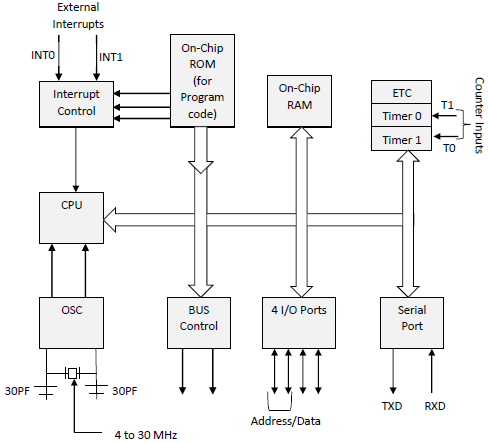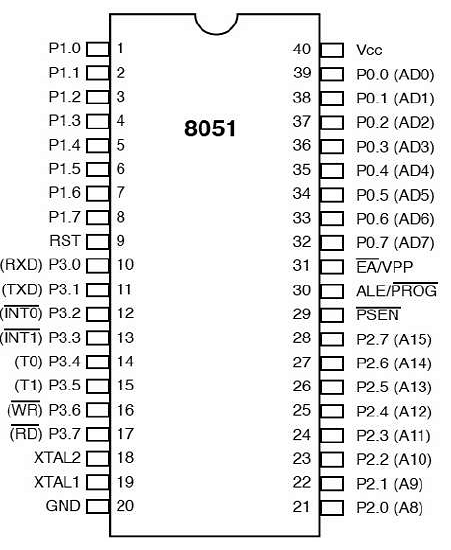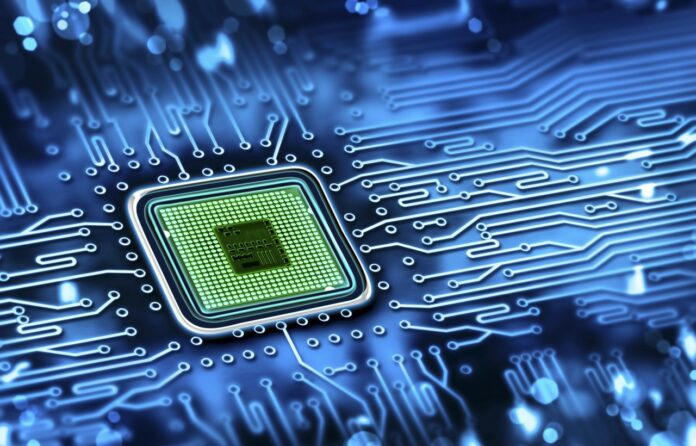The general microcontroller consists of the processor, the memory (RAM, ROM, EPROM), Serial ports, peripherals (timers, counters),
A microprocessor is a programmable electronics chip that has computing and decision making capabilities similar to central processing unit of a computer. radars, satellites and flights.
Bit: A bit is a single binary digit.
Word: A word refers to the basic data size or bit size that can be processed by the arithmetic and logic unit of the processor.
a 16-bit processor.
Bus: A bus is a group of wires/lines that carry similar information.
Control Bus: The control bus carry control signals, which consists of signals for selection of memory or I/O device from the given address, direction of data transfer
Instruction Set
- CISC − CISC stands for complex instruction set computer. It allows the user to insert a single instruction as an alternative to many simple instructions.
- RISC − RISC stands for Reduced Instruction Set Computers. It reduces the operational time by shortening the clock cycle per instruction.
Applications of Microcontrollers
- Light sensing and controlling devices like LED.
- Temperature sensing and controlling devices like microwave oven, chimneys.
- Fire detection and safety devices like Fire alarm.
- Measuring devices like Volt Meter.
It is an 8-bit microcontroller. Let us now discuss the architecture of 8051 Microcontroller.
The system bus consists of an 8-bit data bus, a 16-bit address bus and bus control signals. All other devices like program memory, ports, data memory, serial interface, interrupt control, timers, and the CPU are all interfaced together through the system bus.

The pin diagram of 8051 microcontroller looks as follows −

Classification of Microprocessors:
- Based on their specification, application and architecture microprocessors are classified.
- Based on size of data bus:
- 1 . 4-bit microprocessor
- 2 . 8-bit microprocessor
- 3 . 16-bit microprocessor
- 4 . 32-bit microprocessor
Based on application:
- Microcontroller- microprocessor with built-in memory and ports and can be programmed for any generic control application. Example, 8051.
- Special-purpose processors- designed to handle special functions required for an application. Examples, digital signal processors and application-specific integrated circuit (ASIC) chips.
- Based on architecture:
- Reduced Instruction Set Computer (RISC) processors
- Complex Instruction Set Computer (CISC) processors

Registers
The 8085 includes six registers, one accumulator and one flag register, The 8085 has six general-purpose registers to store 8-bit data; The programmer can use these registers to store or copy data into the register by using data copy instructions.
Program Counter (PC)
This 16-bit register deals with sequencing the execution of instructions. This register is a memory pointer. The microprocessor uses this register to sequence the execution of the instructions.
Instruction Register/Decoder
It is an 8-bit register that temporarily stores the current instruction of a program.
Control Unit Generates signals on data bus, address bus and control bus within microprocessor to carry out the instruction, which has been decoded.
Address Bus: The address bus carries addresses and is one way bus from microprocessor to the memory or other devices. The higher order address lines
Control Bus: Control bus are various lines which have specific functions for coordinating and controlling microprocessor operations. The control bus carries control signals partly unidirectional and partly bidirectional.
data bus.





